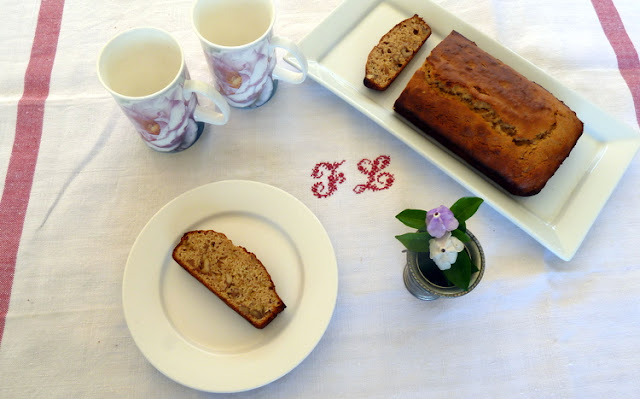Am I one of those skinny 'fat' people?
According to the research conducted by Roy Swank, my MS disability may be greatly reduced if I follow a low saturated fat diet. That is less than 15 grams of saturated fat a day, less than 5g of saturated fat per meal. Many people dismiss the Swank diet as 'not proven', but if you look at the Australian Heart Foundation Diet, they are almost the same. The Heart Foundation says your saturated fat should be no more that 7% of your daily kilojoule intake. So if the average adult consumes 8,700kj per day, no more than 609kj should come from saturated fat. That equates to 16g of saturated fat per day.
I grabbed The Australian Women's Weekly Cooking School Cook Book and looked at the fat content of some common dishes that we eat.
Dish – per serve
|
Total Fat (g)
|
Saturated Fat (g)
|
Spaghetti
Carbonara
|
66.7
|
39
|
Quiche
Lorraine
|
51.8
|
35.4
|
Butter
Chicken (homemade)
|
74
|
33.3
|
Macaroni
Cheese
|
47.5
|
27.8
|
Steak
with Pepper sauce (includes cream)
|
46.7
|
26.3
|
Cream
of Chicken Soup
|
59.2
|
26.2
|
Beef
Stroganoff
|
43.3
|
22.4
|
Eggs
Benedict
|
40.6
|
21.2
|
Beef
lasagne
|
32.5
|
17.2
|
Roast
Chicken with herb stuffing
|
35.9
|
14.4
|
Lemon
Tart – 1 slice
|
25.3
|
14.3
|
Meat
pie (homemade)
|
38.7
|
13.8
|
Spaghetti
Bolognese
|
26.6
|
13
|
Butter
Cake – 1 slice
|
18.6
|
11.6
|
Mushroom
Risotto
|
15.4
|
9.4
|
Standing
Rib Roast with roast vegetables
|
29.2
|
8.5
|
Combination
Fried Rice
|
24.8
|
7.9
|
Mashed
potato
|
10.2
|
6.6
|
Steak
Sandwich
|
20.5
|
5
|
Pad
Thai (noodles)
|
19.7
|
4.5
|
Chilli
Con Carne
|
11.4
|
3.9
|
Sweet
& sour pork
|
20.2
|
3.6
|
Chilli
Prawn linguine
|
20.8
|
3
|
Pork
& vegetable stir fry
|
13.2
|
2.9
|
Chicken
& vegetable soup
|
9.2
|
2.8
|
Singapore
Chilli Crab
|
10.1
|
1.8
|
Poached
egg
|
5.3
|
1.6
|
All the dishes at the top of the list have more saturated fat in them than your whole daily allowance. All the dishes at the bottom of the list have less than 5 grams of saturated fat. The dishes in the middle in theory are too high in fat for me, but if I modified them, I could make them work.
Ways to reduce Saturated Fat
Dairy - The first thing I noticed when I looked at the ingredients in these dishes was that the ones high in saturated fat generally contained a lot of dairy - butter, cream and cheese in particular. The easiest way to reduce saturated fat then, was to cut out the dairy. I cut it out for other MS reasons too, I'm not saying you have to.
Meat - Meat is not completely the enemy when it comes to saturated fat. There are some lean meats that will work. I just control the portion size, and I prefer to eat my meat with chopsticks (in a stir fry), or with a spoon (such as in chicken soup). Processed meats are a problem - sausages, salami's etc... as they are generally very high in saturated fat. My preferred 'meat' now is seafood - fish, prawns, scallops, crab, Moreton Bay Bugs, as these have very low levels of saturated fat in them, and taste delicious.
By eliminating dairy and choosing my 'meats' carefully, I have been able to easily reduce the saturated fat in my diet without being worried about counting grams of fat.
Here are some of the modifications I've made so I can enjoy my food in a healthier way:
- I love risotto, but cooking it with butter and adding all the parmesan cheese at the end makes it too high in fat for me. To get around this, I saute the onion in extra-virgin olive oil, and leave out the parmesan. My kids are happy to grate a small amount of parmesan on top of their risotto rather than having it all through the rice.
- For my mashed potato, I mash it with olive oil, instead of milk/cream and butter, and it's delicious.
- For the fried rice, I leave out the bacon and just make it with seafood and vegetables.
- For roast chicken I leave out the stuffing, sit the bird on a can of beer and roast it vertically in the BBQ. The beer helps to steam the chicken keeping it moist, and being vertical (yes the beer can is up the chicken's you know what), the chicken doesn't cook in it's own fat. I have a small amount of chicken breast and I don't eat the skin.
I would love to hear from you, if you have found other ways to make food healthier.
A Footnote on Fat - Swank states in his book, The Multiple Sclerosis Diet, that the estimated fat intake of our Western ancestors 200 years ago was probably around 60 grams per day. That's total fat, not just saturated fat. The first recorded fat consumption figures in the United States was 125 grams per person per day in 1909. By 1948 it was 141 grams. In comparison China was 38 grams, India 27 grams, and Japan 14 grams. Dietary fat intake in Australia has risen from 129 grams per person per day in 1990-92, to 143 grams in 2005-07.(source)

















































